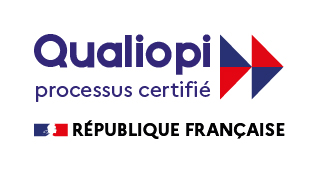When the small stock dividend is declared, the market price of $5 per share is used to assign the value to the dividend as $250,000 (500,000 x 10% x $5). The common stock dividend distributable is $50,000 (500,000 x 10% x $1) since the common stock has a par value of $1 per share. To calculate dividend yield, divide the stock’s annual dividend amount by its current share price. A real estate investment trust (REIT) owns or operates income-producing real estate.
- Many investors, particularly retirees, may try to invest primarily or solely in such dividend-paying stocks.
- That relatively low leverage ratio supports the company’s strong investment-grade bond ratings (A-/BBB+/Baa1).
- It is usually two to three weeks after the declaration date, but it comes before the payment date.
- Cash dividends are a common way for companies to return capital to shareholders.
- These funds are available to a range of budgets, hold many dividend stocks within one investment and distribute dividends to investors from those holdings.
While a stock dividend is not taxable until the shares are sold, a cash dividend is considered taxable income when paid and is subject to ordinary income tax rates. However, cash dividends that are deemed « qualified » by IRS definitions are eligible for lower long-term tax rates. Cash dividends are payments companies make to their shareholders, usually on the strength of earnings. Dividends represent an opportunity for companies to share the benefit of business profits.
Do you already work with a financial advisor?
Preferred stock generally has a stronger claim to dividends than common stock, for instance. Though dividends can signal that a company has stable cash flow and is generating profits, they can also provide investors with recurring revenue. Dividend payouts may also help provide insight into a company’s intrinsic value. Many countries also offer preferential tax treatment to dividends, where they are treated as tax-free income. A company with a long history of dividend payments that declares a reduction of the dividend amount, or its elimination, may signal to investors that the company is in trouble. AT&T Inc. cut its annual dividend in half to $1.11 on Feb. 1, 2022, and its shares fell 4% that day.
A dividend is a payment in cash or stock that public companies distribute to their shareholders. Income investors prefer to earn a steady stream of income from dividends without needing to sell shares of stock. Dividends are commonly distributed to shareholders quarterly, though some companies may pay dividends semi-annually. Payments can be received as cash or as reinvestment into shares of company stock. Cash dividends are declared by a corporation’s Board of Directors, and are paid to shareholders on a per share basis. Companies usually pay dividends on a fixed schedule, such as quarterly, semi-annually, or yearly.
- Dividend payouts may also help provide insight into a company’s intrinsic value.
- And the REIT’s FFO is likely to climb this year as more states move to legalize marijuana, including New Jersey, which commenced adult-use sales just last month.
- Funds may also issue regular dividend payments as stated in their investment objectives.
- As mentioned above, it is for the fact that a company shares the accumulated economic value with its shareholders.
- The declaration date is when the board of directors declares the dividend.
(Both methods are acceptable.) The Dividends account is then closed to Retained Earnings at the end of the fiscal year. The number of shares and per share value affects the amount of dividends. If there are more shares, then less money is distributed per share, and vice versa if there fewer shares outstanding. Given the time involved in compiling the list of stockholders at any one date, the date of record is usually two to three weeks after the declaration date, but it comes before the actual payment date. The declaration date is the date on which the board of directors declares the dividend.
Tips for Managing Your Portfolio
Shareholders would also be skeptical about a stock dividend rather than a cash dividend. For shareholders, the investment growth prospects would be tied with the performance of the company. Also, when investors receive cash dividends, they are not reinvesting their income. In the long-term, that can deplete their investments against inflation.
If you owned 100 shares in the company, you’d receive five additional shares. Companies that decide to pay dividends usually expect to continue the practice on an ongoing basis. Some companies may reduce or even suspend their dividends during periods when profits are low, as was the case during the Great Recession of 2008 and 2009.
Stock Dividend: What It Is and How It Works, With Example
Cash payments offer you the advantage of choosing whether to reinvest the dividends or not. But if you do decide to reinvest your cash dividend back into the company, its growth rate would be slower than that of a stock dividend. For instance, imagine the board of a public company approves a 5% stock dividend. That gives existing investors one additional share of company stock for every 20 shares they currently own. So, say that the company’s shares had a market value of $2.50 and one investor owned 20 shares before the stock dividend. For example, if a company issues a stock dividend of 5%, it will pay 0.05 shares for every share owned by a shareholder.
Dividend Example
For example, Union Pacific Corp. (UNP) pays a dividend of $3.88 per year per share. The $150 share price means that the dividend represents a 2.55% dividend yield—a metric that can be easily compared between companies. A dividend-paying stock generally pays in a range of 2% to 5% annually, whether in cash or in shares.
What Is Cash-and-Stock Dividend?
As mentioned above, when a company chooses one dividend policy consistently, it should offer discrete benefits to shareholders and the company. In simple words, a company is distributing what is already earned by the company. These earnings would have already been reflected in the share prices. If you reinvest dividends, you can supercharge your long-term returns because of the power of compounding. Your dividends buy more shares, which increases your dividend the next time, which lets you buy even more shares, and so on.
Combined, then, an inherent benefit of a cash-and-stock dividend could be to help mitigate the disadvantages of one payout method with the advantages of the other. In thinking about the considerations below, it becomes clear that in some cases, a cash-and-stock dividend could offer shareholders more flexibility than either one alone. And for some, a temporary accounts cash-and-stock dividend might be a better deal because it affords more options for how to handle the dividend. Both private and public companies pay dividends, but not all companies offer them and no laws require them to pay their shareholders dividends. If a company chooses to pay dividends, they may be distributed monthly, quarterly or annually.
How much an investor owes to the IRS on their cash dividends depends on how long they’ve owned the underlying asset. Cash dividends are taxed either at the ordinary income tax rate or a reduced, “qualified” rate of 0%, 15% or 20%. To qualify for a reduced tax rate, the shareholder must own the asset for more than 60 days during the 121-day period that begins 60 days prior to the ex-dividend date. Preferred stock prices are generally also consistent like bond prices and may not offer the potential for growth that most common stock does.
A stock dividend is a dividend paid as shares of stock instead of cash. You can sell these dividend shares for an immediate payoff, or you can hold them. A stock dividend functions essentially like an automatic dividend reinvestment program (more on that below). Tax is another important consideration when investing in dividend gains. Investors in high tax brackets often prefer dividend-paying stocks if their jurisdiction allows zero or comparatively lower tax on dividends.




